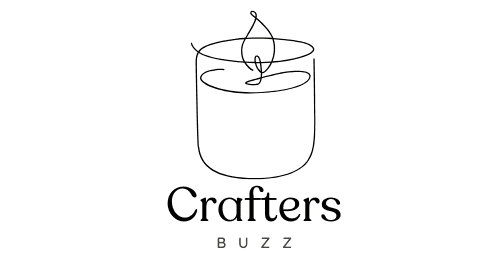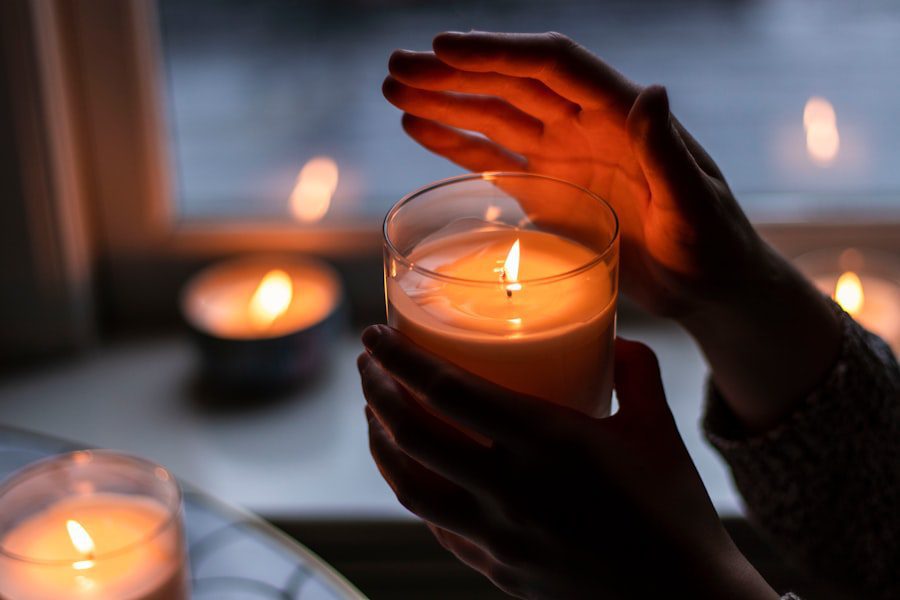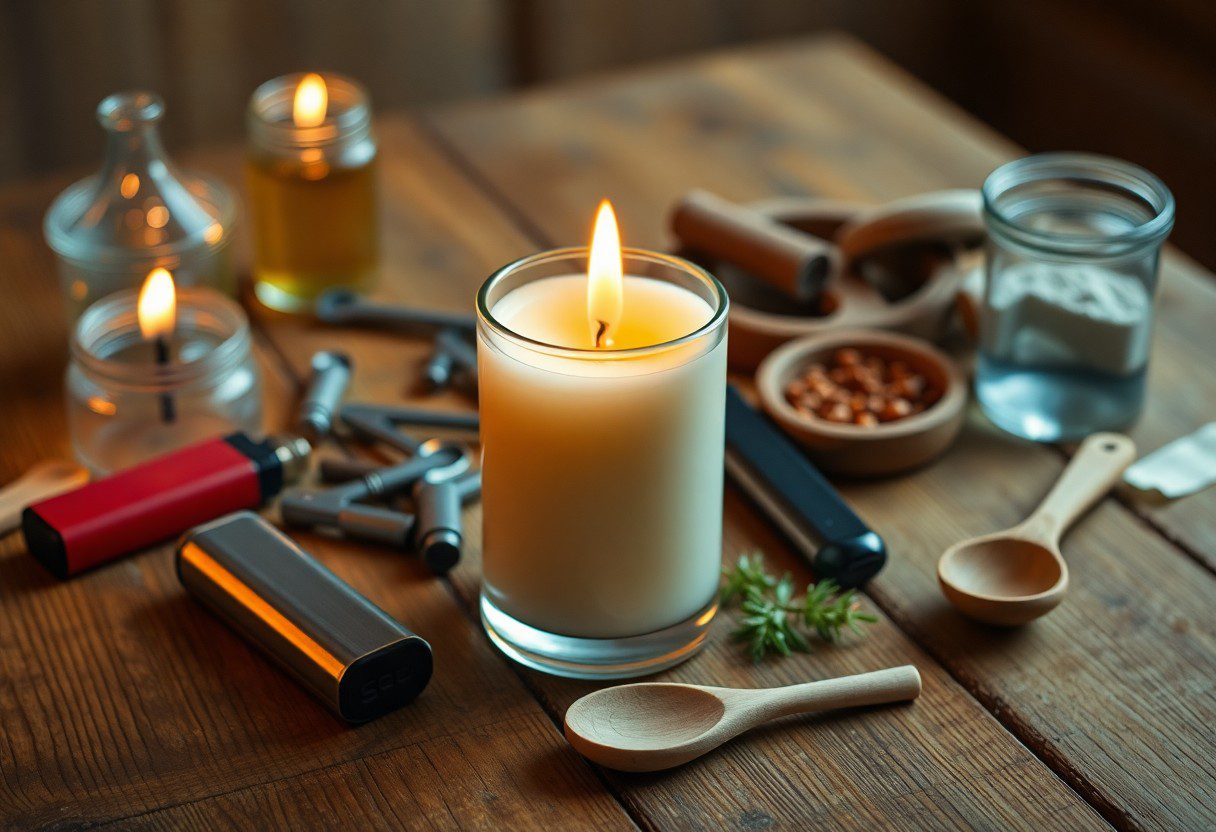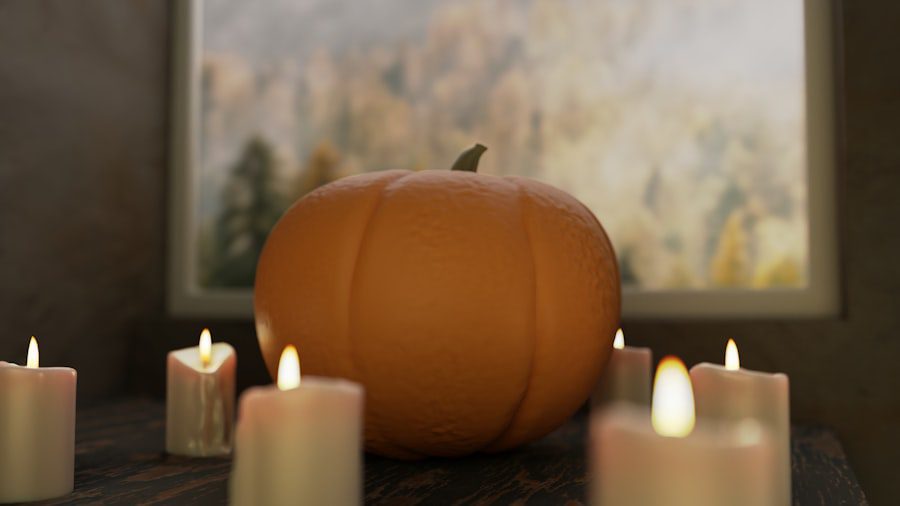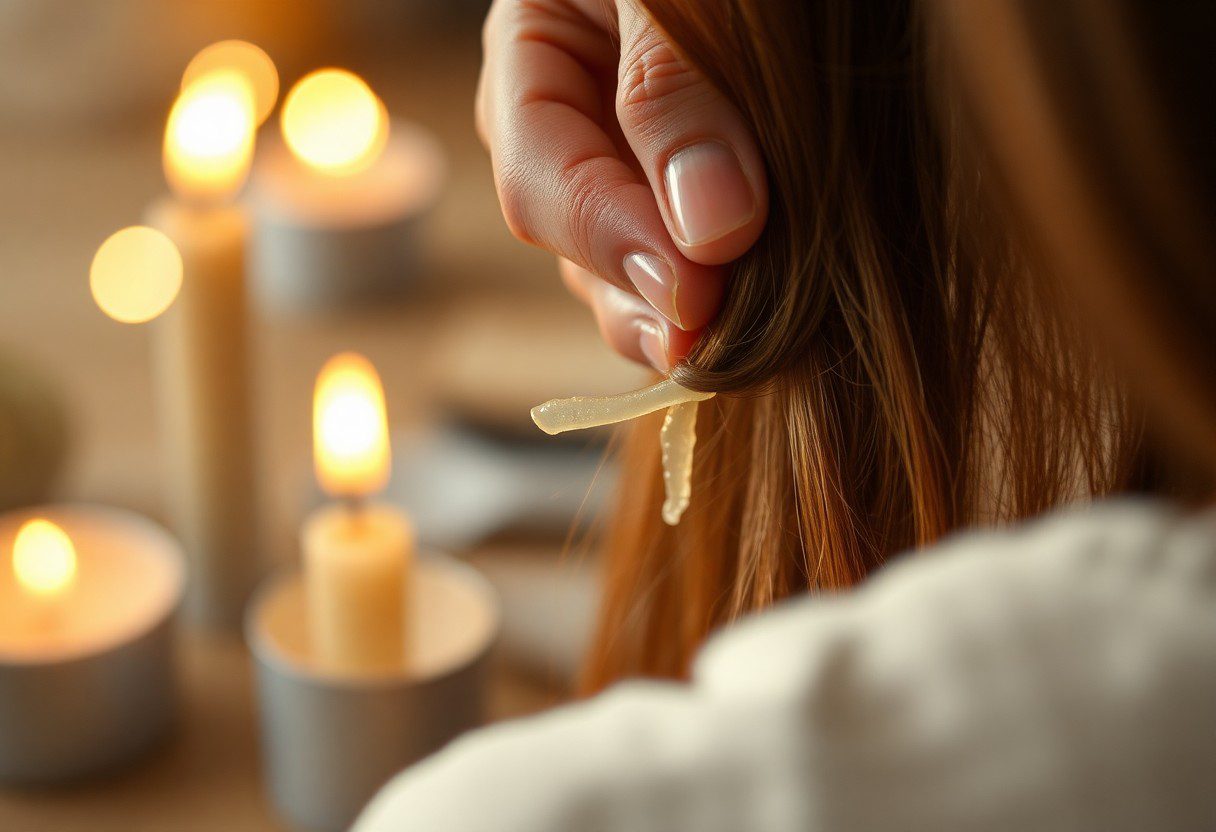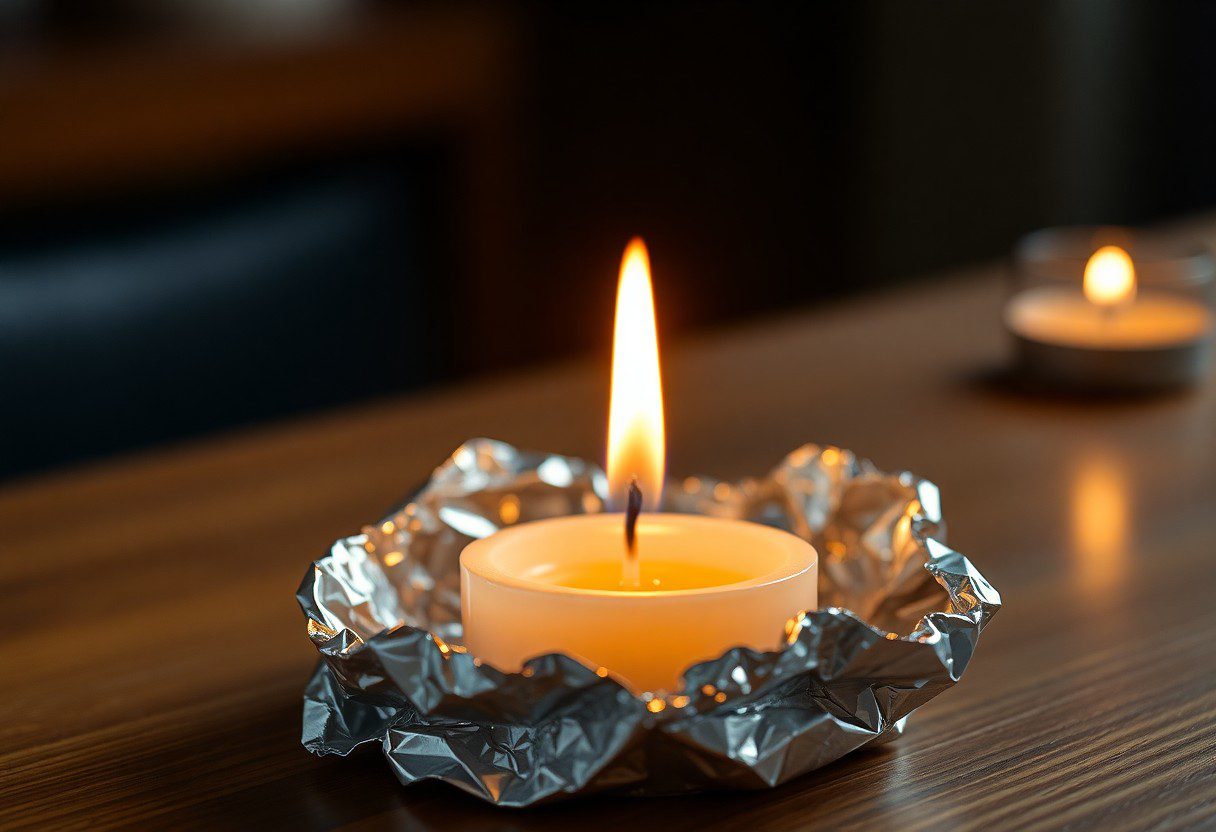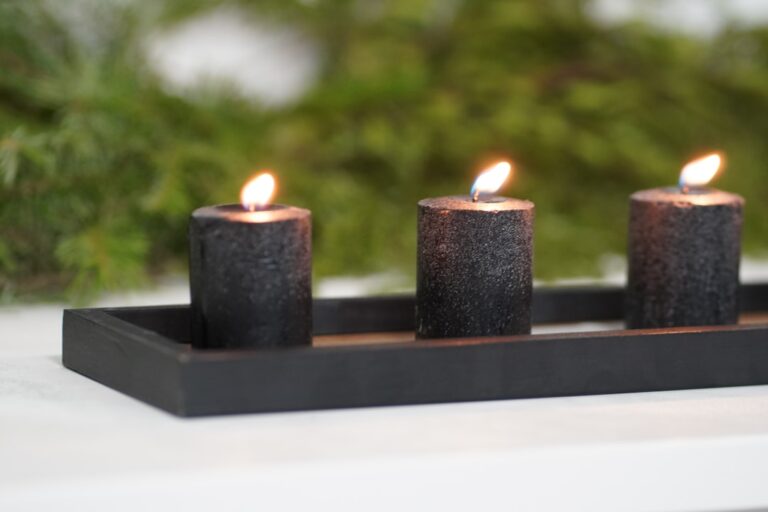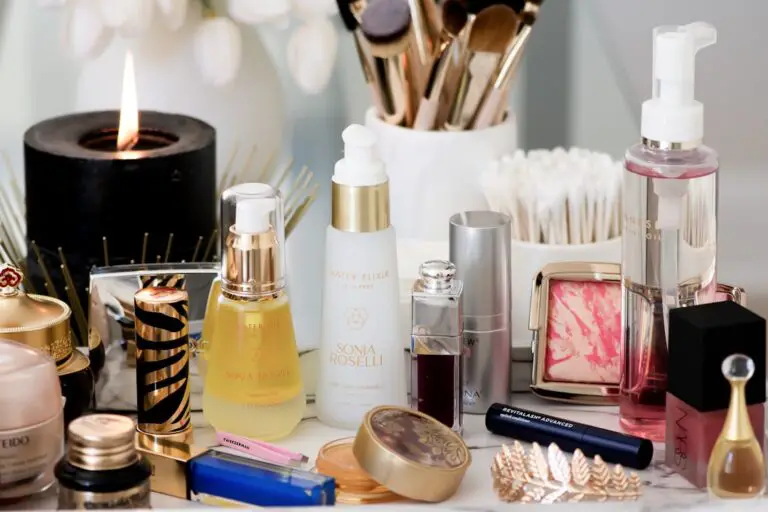Solutions to correct uneven burns in candles.
Uneven burns in candles can be a source of frustration for many candle enthusiasts. The phenomenon occurs when a candle does not burn evenly, leading to unsightly wax buildup on one side while the other side burns down more quickly. Several factors contribute to this issue, and understanding them is crucial for achieving a consistent burn.
One primary cause is the wick’s interaction with the wax. If the wick is too long or too short, it can lead to an improper melt pool, which in turn affects how the wax is consumed. A wick that is too long may produce excessive soot and cause the candle to burn too hot, while a wick that is too short may not generate enough heat to melt the wax evenly.
Another significant factor influencing uneven burns is the type of wax used in the candle. Different waxes have varying melting points and burn characteristics. For instance, paraffin wax tends to burn hotter than soy wax, which can lead to different burn patterns.
Additionally, additives such as fragrance oils and dyes can alter the burning properties of the wax. If a candle contains a high concentration of fragrance oil, it may burn unevenly due to the differing densities and melting points of the components. Understanding these variables is essential for both candle makers and consumers who wish to enjoy a more uniform burn.
Trimming the Wick Properly
Wick maintenance is a critical aspect of ensuring an even burn in candles. One of the most effective ways to promote a consistent burn is by trimming the wick before each use. A properly trimmed wick should be approximately 1/4 inch long.
This length allows for an optimal flame size that produces enough heat to melt the wax evenly without creating excessive soot or smoke. If the wick is too long, it can lead to a larger flame that may cause the candle to burn too quickly, resulting in wasted wax and an uneven burn. In addition to promoting an even burn, trimming the wick also enhances safety.
A long wick can lead to flickering flames, which may pose a fire hazard if left unattended. Regularly trimming the wick not only helps maintain a steady flame but also contributes to a cleaner burning experience. Candle enthusiasts should make it a habit to check and trim their wicks before lighting their candles, ensuring that they enjoy the full benefits of their carefully crafted products.
Choosing the Right Size Wick
Selecting the appropriate wick size is fundamental to achieving an even burn in candles. The size of the wick must correspond to the diameter of the candle; a wick that is too small will struggle to create a sufficient melt pool, while one that is too large may lead to excessive heat and rapid burning. Candle makers often refer to wick sizing charts that take into account various factors such as wax type, fragrance load, and candle diameter.
These charts provide guidance on which wick sizes are best suited for specific candle designs. For example, if a candle has a diameter of 3 inches and is made from soy wax with a moderate fragrance load, a medium-sized wick would typically be recommended. Conversely, if the same candle were made from paraffin wax with a high fragrance load, a larger wick might be necessary to ensure that the candle burns evenly and efficiently.
Understanding these nuances allows both makers and users to select wicks that will optimize performance and enhance the overall candle experience.
Using Quality Wax and Additives
The quality of wax used in candle making plays a pivotal role in determining how evenly a candle burns. High-quality waxes are formulated to provide consistent melting properties and optimal burning characteristics. For instance, natural waxes like soy or beeswax tend to burn more evenly than lower-quality paraffin waxes, which can sometimes produce uneven burns due to impurities or inconsistent melting points.
When selecting wax, it is essential to consider not only its source but also its formulation and any additives that may be included. Additives can significantly influence how a candle burns. For example, vybar is a common additive used in paraffin wax that helps improve scent throw and reduce mottling, but it can also affect how evenly the candle burns.
Similarly, stearin can be added to enhance hardness and improve burning stability. However, using too many additives or low-quality ingredients can lead to complications in burn performance. Therefore, it is crucial for candle makers to experiment with different formulations and conduct thorough testing to ensure that their candles provide an even burn while maintaining their desired aesthetic and aromatic qualities.
Positioning the Candle Correctly
The placement of a candle can greatly impact its burning behavior. Candles should be positioned on stable surfaces away from flammable materials and drafts. An unstable surface can cause the candle to tilt, leading to uneven melting and potential safety hazards.
Additionally, placing candles near windows or air vents can expose them to drafts that disrupt their burn patterns. When lit, candles create their own airflow; if they are subjected to external drafts, it can lead to flickering flames and uneven wax consumption. Moreover, positioning candles at an appropriate distance from walls or other objects is essential for ensuring an even burn.
Ideally, candles should be placed at least 3 inches apart from each other and from any surrounding objects. This spacing allows for adequate airflow around each candle, promoting even heat distribution and preventing one candle from affecting another’s burn quality. By being mindful of where candles are placed, users can significantly enhance their burning experience.
Avoiding Drafts and Airflow
Drafts are one of the most common culprits behind uneven burns in candles. Airflow can disrupt the flame’s stability, causing it to flicker or lean toward one side. This instability leads to an inconsistent melt pool, where one side of the candle may burn faster than the other.
To mitigate this issue, it is essential to identify potential sources of drafts in the environment where candles are used. Common sources include open windows, air conditioning vents, fans, or even people moving around in close proximity. To create an optimal burning environment, consider using candles in rooms with minimal airflow disturbances.
If possible, light candles in areas where they are shielded from drafts—such as on tables away from windows or doors. Additionally, using candle holders with windshields or glass enclosures can help protect the flame from external airflow while still allowing for proper ventilation. By taking these precautions, users can enjoy a more consistent burn and prolong the life of their candles.
Rotating the Candle
Rotating candles during use is an often-overlooked technique that can help achieve an even burn. As candles burn down, they tend to develop a melt pool that reflects how heat is distributed across their surface area. By gently rotating the candle every so often—ideally every 30 minutes—users can encourage more uniform melting across all sides of the candle.
This practice helps prevent one side from burning down faster than another due to uneven heat distribution. In addition to promoting an even burn, rotating candles can also enhance their overall aesthetic appeal. As different sections of the candle melt away, users may notice variations in color or texture that add visual interest to their experience.
This technique is particularly beneficial for multi-layered or multi-colored candles where different sections may have distinct characteristics. By incorporating rotation into their candle usage routine, enthusiasts can maximize both performance and enjoyment.
Using Candle Accessories
Candle accessories play an important role in enhancing both functionality and aesthetics when it comes to burning candles evenly. One popular accessory is a candle snuffer, which allows users to extinguish flames without creating smoke or soot that could affect future burns. Snuffing out a candle rather than blowing it out helps maintain a clean wick for subsequent uses, contributing to a more consistent burn over time.
Another useful accessory is a wick dipper or wick trimmer designed specifically for maintaining optimal wick length during use. These tools allow users to adjust wicks easily without disturbing the melt pool or creating excess soot. Additionally, decorative candle holders not only serve as beautiful accents but also help stabilize candles while providing protection against drafts and spills.
Incorporating these accessories into one’s candle routine can significantly enhance both safety and performance while ensuring that each burning experience is as enjoyable as possible. By investing in quality tools designed for candle care, users can extend the life of their favorite candles while enjoying their full aromatic potential without compromising on burn quality.
If you are interested in learning more about the different types of candles and their history, you may want to check out the article From Tallow to Paraffin: The Candlemaking Journey. This article explores the evolution of candlemaking materials and techniques over time, shedding light on the fascinating world of candle production. Understanding the origins of candles can provide valuable insight into how to correct uneven burns and improve the overall quality of your homemade candles.
FAQs
What causes uneven burns in candles?
Uneven burns in candles can be caused by a variety of factors, including the type of wax used, the size and type of wick, drafty conditions, and improper candle maintenance.
How can I correct uneven burns in candles?
To correct uneven burns in candles, you can try trimming the wick, ensuring the candle is placed in a draft-free area, and allowing the candle to burn long enough for the wax pool to reach the edges of the container.
What type of wax is best for preventing uneven burns in candles?
Soy wax and beeswax are known for providing more even burns compared to paraffin wax. These natural waxes have lower melting points and can help prevent tunneling and uneven burning.
How can I prevent uneven burns in candles in the future?
To prevent uneven burns in candles, it’s important to trim the wick before each use, keep the candle away from drafts, and allow the candle to burn long enough for the wax pool to reach the edges of the container. Using high-quality waxes and wicks can also help prevent uneven burns.
